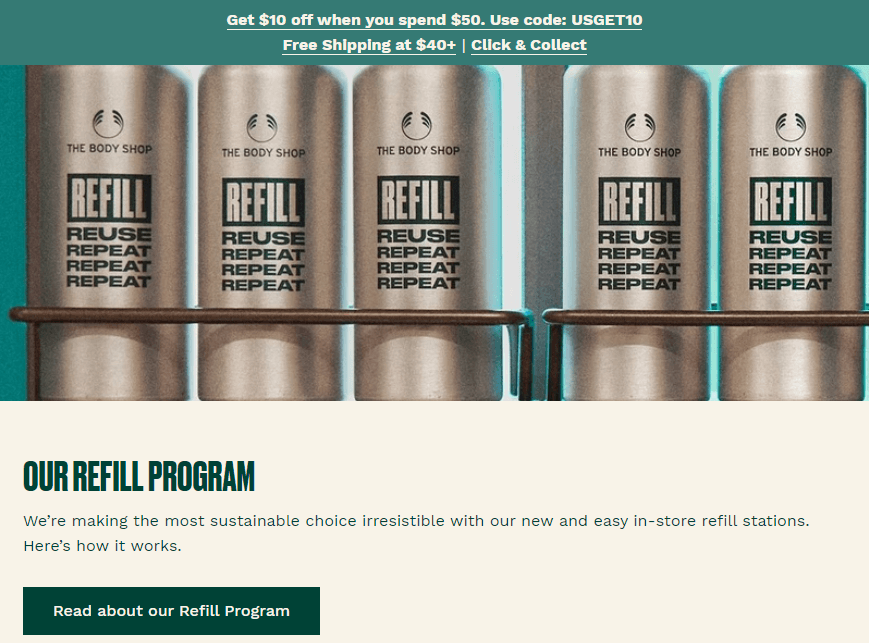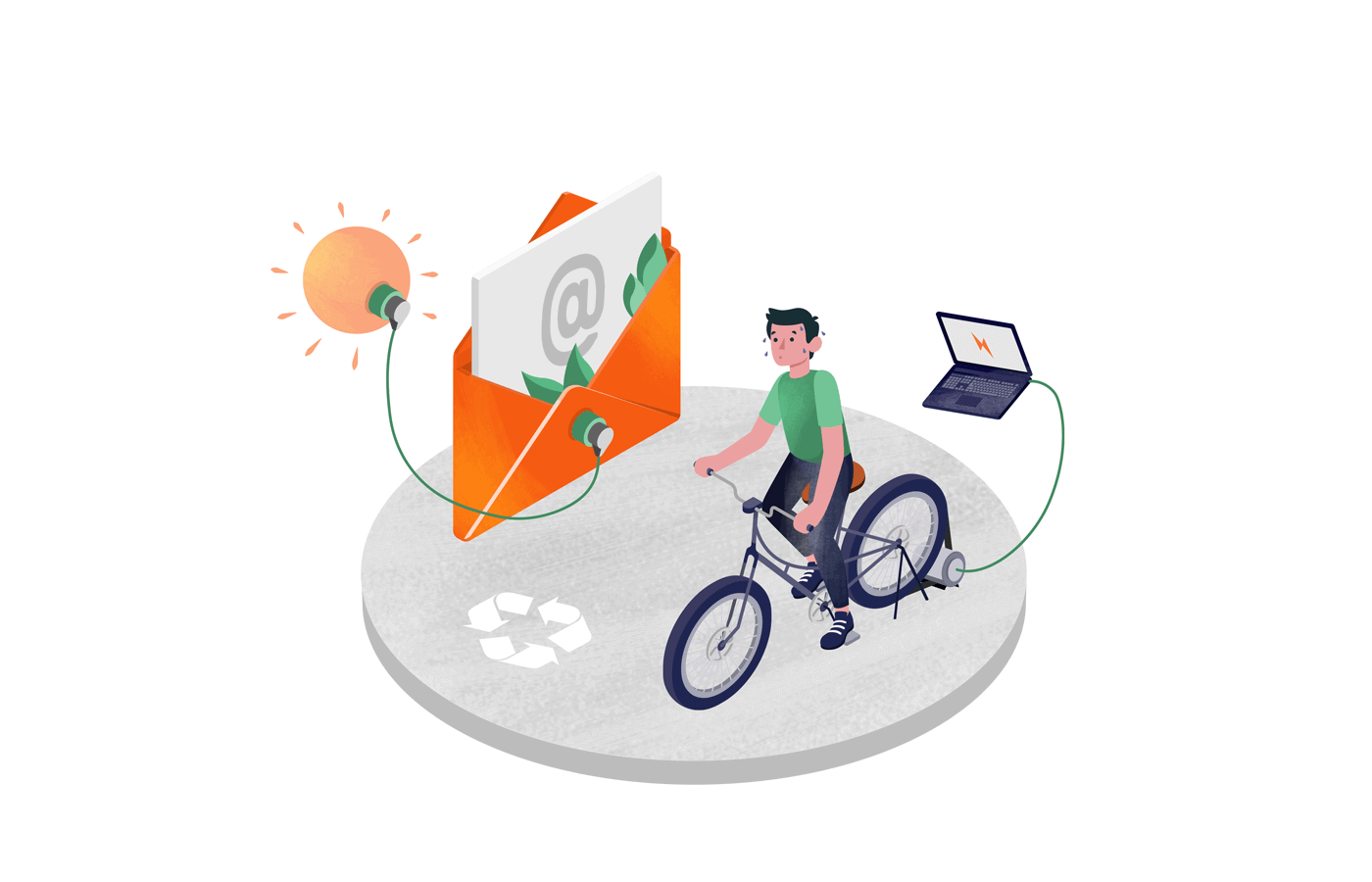In 2019, Starbucks, together with McDonald’s, Coca Cola and a couple of other brands, created the NextGen cup challenge. The idea of the challenge was to get as many participants involved in innovating a recyclable or compostable cup to replace the existing plastic-lined fiber cups.
These new cups are expected to reduce the waste caused by the disposal of the existing coffee cups. Creating new eco-friendly cups was a part of Starbucks’s effort at green marketing.
Meaning of Green Marketing
Green marketing is a strategic pursuit to position your brand’s product as environmentally friendly and sustainable to consumers. Green marketing involves the use of apparent eco-friendly appeal in driving sales.
At the center of green marketing is creating and distributing clean and recyclable products. The objective is to promote products with minimal harmful effects on the environment from production to distribution, consumption, and disposal.
The critical areas in green marketing include (but are not limited to) sustainable manufacturing practices and distribution, green packaging, and sustainable advertising.
Environmental Marketing Vs. Green Marketing
Green marketing is the waste disposal practices and sustainability strategies a company integrates to market its products to its targeted audience.
However, sustainable marketing (also called environmental marketing) is considered more thorough.
Environmental marketing addresses the environmental aspect and how the economic and social aspects of production, sales, and consumption of products affect nature.
Then there is Greenwashing.
Not all companies that claim to regard sustainability do.
Greenwashing is the practice of brands painting a false green image for themselves. Such brands tune their packaging and messages to have superficial values of environmental friendliness.
Why is Green Marketing Important?
Firstly, as expected, sustainability and helping create a cleaner planet. Other than creating eco-friendly products, green companies usually aim to spread public awareness about following sustainability practices.
Green marketing initiatives and campaigns also promote research among scientists and companies to create green options while eliminating harmful ones.
For instance, the NextGen cup challenge resulted in various eco-friendly cups—mitigating the effect of “250 billion” disposable cups creating landfills every year.
Also, going green helps companies lessen the effect of the creation and consumption of goods on the planet.
Benefits of Green Marketing
Apart from the positive impact on the environment, what can green marketing companies gain?
Improved Brand Image
Positioning your company as one that practices sustainability will help you gain credibility fast. Companies with plans and resources to care for the environment have great brand images. Since more people are interested in eco-friendly practices, going green is a great way to get the public to trust you.
It gets You New Fans
While you may be able to convince members of the general public to buy your green products, you have another advantage when you market your products as green. There are groups of people that are keen on the concept of sustainability. You can easily make these groups your loyal fans.
Room for Future Growth
Several companies and individuals are moving in the direction of sustainability. If you come up with a green project, you will have great investors and partners coming your way.
More Sales
Since buyers fancy brands with a significant sustainability image, you’ve got a massive audience at your disposal. A report from Mintel states that over one-third of Americans are willing to pay more for green products.
Competitive Advantage
Green marketing is a relatively new concept as many brands are yet to implement it. Companies that get onto it early enough have a competitive advantage. Plus, it’s easy to build up a loyal customer base in fields where your competitors are not offering green options.
How Green Marketing Works
Generally, green marketing entails incorporating sustainable elements in a company’s marketing processes or strategies. Let’s consider the “4 Ps” model for green marketing.
Product
Green products should not contaminate the environment. Instead, it should holistically work to eradicate any damage that has already occurred.
Price
Green items may come with slightly higher price tags than traditional options, but that’s not an issue. Instead, environmentally conscious groups like LOHAS (Lifestyles of Health and Sustainability) pay a premium for green products.
Place
Where your buyers search and find your products to purchase is another factor you should consider. Since there’s a focus on environmentally friendly packaging, you have a role in addressing how your products will be transferred from production to final consumers. For instance, food from local farms is more accessible to market as “green” than imported products.
Promotion
Promotion is the crux of green marketing. It’s how you get your message across to your target audience. For promotion, use a two-dimensional strategy:
Position your products as the best eco-friendly solutions for the problems they solve and position yourself as the best company to offer these solutions.
Leading Green Marketing Strategies
Here are some strategies you can implement for your green marketing goals;
- Create green products from sustainable materials
Using sustainable materials to create green products is crucial to green marketing. Also, the final state of the products should not be harmful to the environment—for instance, use biodegradable detergent or reusable coffee cups and water bottles.
- Sustainable design and packaging
Apart from products, another critical area of concern is packaging and disposal. As a green company, you can initiate a wholesome waste disposal plan.
- People and campaigns
Get people involved in your sustainability efforts. Challenges and campaigns are great ways to encourage your fans to get creative with sustainability practices as you carry them along with your brand.
- Giving to your community
Sponsor projects aimed at making the environment cleaner. It can include planting trees, cleaning spills, waste disposal, park cleaning, etc. Monster Insights, as an example, came up with a project to plant five trees for every purchase of their pro plan during their Black Friday deal. The big goal was to plant 10,000 in total.
- Cutting down energy use
Using renewable energy sources instead of fossil fuels reduces manufacturing costs while saving non-renewable resources.
Fortunately, sustainable energy tools are easy to install and have less cost on production because you don’t have to keep purchasing resources that deplete. For example, you can put solar panels on the roof of your building. Other renewable energy sources are wind and hydropower plants.
- Collaboration and partnership
You can form partnerships with, and donate to, non-profit bodies dedicated to saving the environment. Collaboration allows you to go green without directly carrying out projects. Although, you can also go the extra mile and fund NGOs alongside your company’s sustainability projects.
- Electronic promotion and advertising
It would be best to plan a shift from print media of marketing and ads to digital media. Doing this will save paper and, in turn, save trees. PVC and plastics sheets for billboards are sources of pollution and landfill.
Electronic marketing includes social media marketing, email marketing campaigns, and blogging. Luckily, these means are great for testing the effectiveness of your marketing strategies. From website reviews to social media comments, you can track the success of your efforts.
Green Marketing Examples
The strategic practice of green marketing can help you connect with the right customers. You can engage in green marketing via your advertising materials or product.
Green Advertising
Green advertising reduces the negative impact created by producing and distributing conventional advertising materials.
Print advertising has adverse effects on the environment due to the emission of carbon dioxide. Processes that cause this include large-scale deforestation, manufacturing ink from petrochemicals, non-degradable objects like plastics, etc.
Using electronic media (technology) for marketing and advertising is more sustainable than offline and print methods.
Website pop-up ads, Facebook ads, google paid ads, emails, SMS, and other digital advertising channels are great tools for brands looking to adopt the green marketing initiative.
Green Marketing Products
A green product is manufactured with sustainable practices and designed to have minimal impacts on the environment through its life-cycle until its disposal.
Green products have some of these features:
- Free from chemicals that are toxic to both humans and the environment
- Made using renewable energy
- Produced under processes that employ ethical treatment of workers and animals
- Reduced carbon emission during its use
- No/minimal energy consumption for its use
- Easily recyclable/decomposable
Examples of brands that promote green products are:
Patagonia
Another brand that promotes sustainability is Patagonia, a designer of outdoor wear and gear. One thing that stands out about Patagonia is that they admit that they are not entirely green.
Patagonia makes known what parts of their products are not green. But their honesty has no adverse effect on their brand’s image because the company has made great efforts at helping the planet.

Patagonia has featured in different news broadcasts for donating millions to projects that support sustainable agriculture, coral reef restoration, protecting endangered species, and reforestation.
IKEA
Ikea aims to manage waste and use renewable energy. Their sustainability ambition led to their People and Planet Positive initiative, which encourages environmental consciousness and care.

IKEA offers stylish furniture at affordable prices while meeting the challenges of sustainable consumption.
Avocado
This brand creates handcrafted mattresses, bedding, and pillows from organic materials and recycled items.

Promoted as “one of the world’s most sustainable brands”, they source raw materials from their farms and herds. As a result, avocado prioritize both the health of their customers and the planet.
The Body Shop
The beauty brand creates cruelty-free cosmetics from vegan products. This is considerable progress for sustainability since the beauty industry has a horrible history of testing chemicals on animals.

Their marketing strategy is centered around its effort at animal safety and sustainability. However, the company is also involved in societal issues like women’s rights, farmers’ rights, Black Lives Matter, peace, etc.
Definition of Green Marketing
Green marketing is a strategic pursuit to position your brand’s product as environmentally friendly and sustainable to consumers. It involves using advertising materials with an apparent eco-friendly appeal to drive sales.
If you are looking for a refined email marketing service for green email marketing campaigns and something that will not cost an arm and a leg to keep using, you are in the right place!
Sender is a multipurpose platform with a wide array of features, from audience gathering tools to multichannel automation, including email and SMS messages. So take Sender for a spin with zero financial commitment with 15 000 monthly emails and unrestricted feature access.
Content Contributor – Tobi Cyprain
